Types of Thyroid Disorders
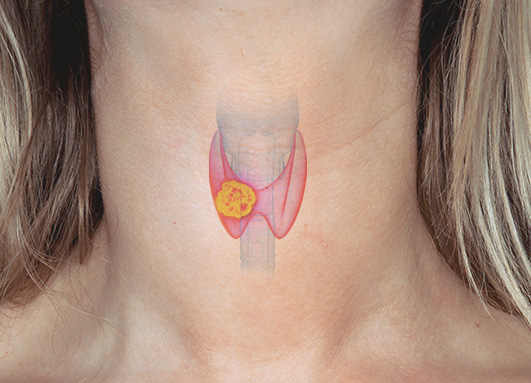
Hyperthyroidism (Thyroid Overactivity)
Thyroid hormones play a crucial role in regulating the body's metabolic rate. When these hormones are excessively secreted due to various causes, symptoms of thyroid poisoning appear, which is referred to as hyperthyroidism.
Causes
The most common cause of hyperthyroidism is Graves' disease, an autoimmune condition affecting the thyroid gland.
This disease tends to occur in individuals between the ages of 20 to 50 and is more prevalent in women than in men.
Symptoms of Hyperthyroidism
Palpitations (rapid heartbeat) and easy fatigue even with minimal exertion.
Intense hunger leading to eating a lot, but losing weight.
Difficulty tolerating hot environments and excessive sweating.
Frequent loose stools or diarrhea.
Increased anxiety and difficulty sleeping.
Protruding eyes (exophthalmos) is often seen in many cases.
Hyperthyroidism Treatment Methods
Treatment for hyperthyroidism typically involves medication, and continuous monitoring is essential throughout the process.
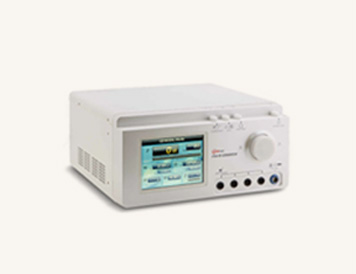
Radiofrequency Ablation
Radiofrequency ablation is a minimally invasive treatment where a high-frequency needle is precisely inserted into the tumor under ultrasound guidance. Once inserted, the needle delivers radiofrequency waves, generating heat within the tumor. This heat reaches temperatures of around 100°C, effectively destroying the tumor.
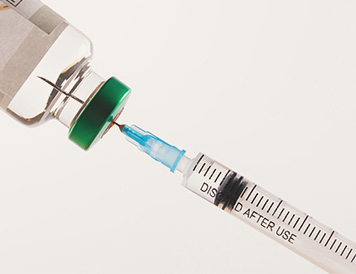
Alcohol Ablation Therapy
Alcohol ablation therapy involves accurately diagnosing the size and location of benign thyroid tumors using ultrasound. After this, an appropriate amount of alcohol is injected directly into the tumor tissue. Over time, the tumor gradually shrinks, and eventually, only the normal tissue remains, with the benign tumor completely eliminated.

Medication Treatment
Medication treatment involves the patient taking prescribed medications under the supervision of a specialist to treat the condition. After completing the course of medication, there may still be a risk of recurrence, so regular follow-up and monitoring are necessary to assess the patient's condition and ensure that the treatment remains effective.
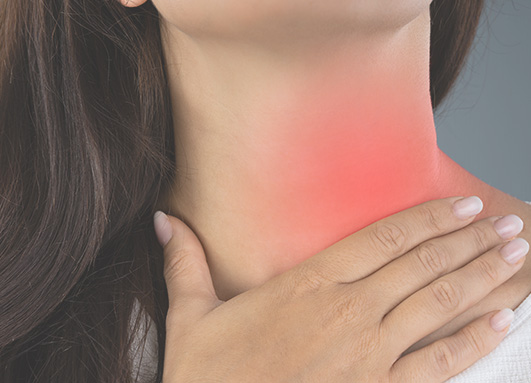
Hypothyroidism
Thyroid hormones play a crucial role in regulating the metabolism in our body. Hypothyroidism occurs when the thyroid gland fails to produce sufficient thyroid hormones, leading to a decrease or deficiency in the levels of thyroid hormones in the body. This condition can slow down various bodily functions, causing a range of symptoms.
Causes
Hypothyroidism can be caused by issues with the thyroid gland itself or by problems with the signals that instruct the thyroid to produce hormones. The most common cause is Hashimoto's thyroiditis, an autoimmune condition where the immune system attacks the thyroid gland, leading to a reduction in thyroid hormone production. This condition is one of the leading causes of hypothyroidism.
Symptoms of Hyperthyroidism
Feelings of fatigue and sluggishness, with slow speech and movements.
You may experience a decrease in appetite, but still gain weight and notice swelling in the face.
Increased menstrual flow and potential infertility in women
If hypothyroidism becomes severe, it can lead to heart failure, causing difficulty breathing,
a drop in body temperature, and potentially leading to a coma.
Hypothyroidism treatment
Hypothyroidism treatment typically involves medication therapy, specifically the replacement of thyroid hormones

Medication Treatment
This is a method of treating the condition by taking medication prescribed by a medical specialist. Even after completing the course of medication, there is a possibility of recurrence, so regular follow-up and monitoring are necessary.
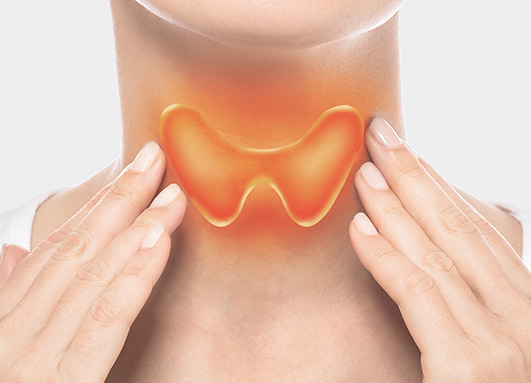
Thyroiditis
Thyroiditis is a condition in which the thyroid gland is damaged by various inflammatory cells.
Most cases of thyroiditis present with no specific symptoms or only very vague ones,
making it difficult to detect.
As a result, it's important to be aware that the appropriate timing for treatment can easily be missed.
Causes of Thyroiditis
Thyroiditis can be caused by various factors.
Acute Thyroiditis : This occurs when bacteria or microorganisms invade the thyroid gland, usually in patients with pre-existing thyroid disorders.
Subacute Thyroiditis : The exact cause is not clearly understood, but many patients have a history of upper respiratory infections, such as the common cold.
Painless Thyroiditis : Thought to be a variant of Hashimoto's thyroiditis.
Postpartum Thyroiditis : A type of painless thyroiditis that occurs after childbirth.
Chronic Lymphocytic Thyroiditis (Hashimoto's Thyroiditis) : An autoimmune condition in which the body’s immune system attacks the thyroid gland.
Symptoms of Hyperthyroidism
A sensation of pressure in the neck, often accompanied by swelling or enlargement of the thyroid gland
Pain in the neck area, which may worsen when touched—especially in cases of subacute thyroiditis
General symptoms resembling the flu, such as fatigue, malaise, fever, and widespread muscle aches
If left untreated, thyroiditis can lead to hyperthyroidism.
As inflammation damages thyroid cells, thyroid hormones may leak into the bloodstream.
Depending on the amount released, symptoms of hyperthyroidism may appear—such as excessive sweating, heart palpitations, nervousness, hand tremors, and unexplained weight loss.
Treatment of Thyroiditis
Treatment for thyroiditis typically involves medication, accompanied by continuous monitoring.
Regular check-ups are important to track changes in thyroid hormone levels and adjust treatment as needed.

Medication Therapy
This treatment involves taking prescribed medications under the guidance of a specialist. Even after completing the course of medication, there is a possibility of recurrence, so regular follow-up and monitoring are essential to manage the condition effectively.

Thyroid Nodules
Thyroid nodules are lumps that form in the thyroid gland due to various causes.
Their size can range from just a few millimeters to several centimeters.
Nodules large enough to be felt by touch are found in approximately 4-7% of the adult population.
Causes of Thyroid Nodules
Although the exact causes of thyroid nodules are not clearly understood,
they are believed to result from a combination of environmental and genetic factors.
Based on histological characteristics, thyroid nodules are classified into several types:
Hyperplastic nodules, Colloid nodules, Inflammatory nodules, Cystic nodules,
Neoplastic nodules, which may include thyroid cancer
Hyperplastic Nodules : These occur due to the proliferation of thyroid cells, often caused by iodine deficiency.
In South Korea, this type is not commonly seen.
Colloid Nodules : These nodules form when a liquid substance called colloid, produced by thyroid cells,
accumulates within the gland.
Inflammatory Nodules : These develop when lymphocytic thyroiditis forms nodules as it progresses.
Cystic Nodules : These are formed when existing nodules undergo necrosis and degeneration.
Neoplastic Nodules : Most of these are benign, but around 4-25% may be malignant (thyroid cancer).
Genetic mutations are often implicated in these cases.
Symptoms of Thyroid Nodules
Most thyroid nodules, even those that are cancerous, do not show symptoms.
However, in some cases, the nodule may press against surrounding structures, such as the esophagus or trachea, leading to symptoms like difficulty swallowing (dysphagia) or breathing problems (dyspnea).
If hemorrhagic necrosis occurs within the nodule or if an infection, such as bacterial or viral thyroiditis, develops, the nodule may grow in size and cause pain within a few days.
Most thyroid nodules are benign, but if the nodule grows rapidly or causes symptoms such as voice changes,
there is a possibility of malignancy. In such cases, it is important to undergo active testing and evaluation to determine the nature of the nodule.
Treatment of Thyroid Nodules
The treatment for thyroid nodules varies depending on the results of a fine-needle aspiration (FNA) biopsy.
Based on the findings, options may include monitoring, medication, or surgical intervention.

Surgical Treatment
If the test results suggest malignancy or confirm it, the thyroid nodule is removed through surgery.
To prevent recurrence, it is common to remove not only the nodule but also the portion of the thyroid gland that does not contain nodules.
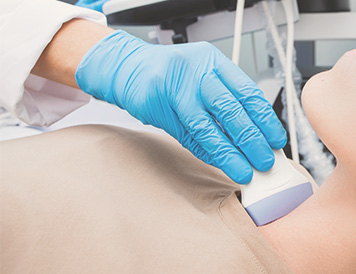
Regular Check-ups
If the nodule is diagnosed as benign, surgery is not performed, and the nodule is monitored through ultrasound and physical exams every 6 to 12 months.
If the size of the nodule increases or if new signs of cancer are observed in the ultrasound findings, a fine-needle aspiration (FNA) biopsy is repeated for further evaluation.

Medication Therapy
Medication therapy involves taking prescribed medications under the guidance of a specialist to treat the condition.
After completing the medication, regular follow-up and monitoring are necessary due to the possibility of recurrence.
Privée Special